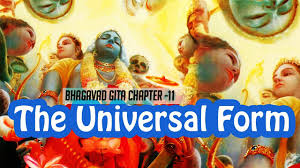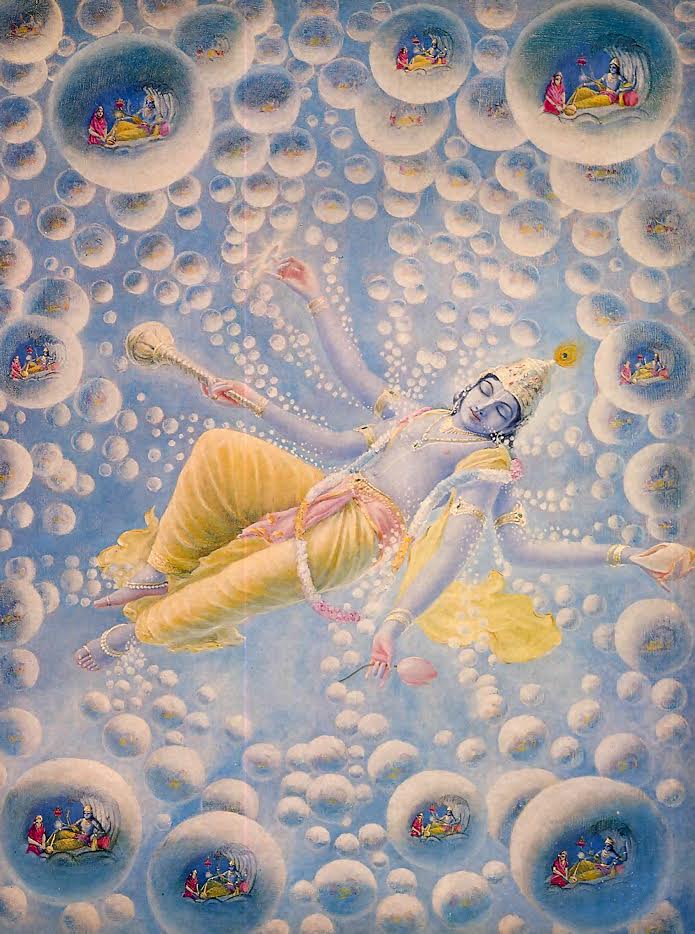Search here

09-Oct-2024 , Updated on 7/29/2025 4:11:27 AM
How does Bhagwat Geeta Explained Multiverse
Today, we are discussing the multiverse in the same breath as discussing some new and bleeding-edge theory from physics or a movie revelation from a world of sci-fi. But here’s the brutal truth: The Bhagavad Gita, thousands of years ago, at least mentioned the multiverse in its discourse. But we at the same time ignore this great wisdom and let the so-called science take its glory. Let’s understand one thing: this concept is not a creation of recent globalisation, physics experimentation, or science fiction—this is Sankalp for ages, straight from the Gita.
However, in the Bhagavad Gita, the idea of the large, intertwined, and densely populated world is not only an assumption but a fact. Many of the followers of Hinduism consider Lord Krishna as one of their supreme gods, and in the Bhagavad Gita, Lord Krishna in the eleventh chapter shows his universal form to Arjuna. What is seen by Arjuna is not simply the set of worlds or dimensions as the human mind cannot fathom but the worlds, realms, and beings. This is the multiverse that offers multiple planes of existence happening in parallel to one another right in front of him. Thus Krishna is not confined to a form or the universe and is the sum of everything everywhere, each form containing realities of numerous sciences and the laws of space, time, and matter.

Modern science likes to brag about parallel universes, and the Bhagavad Gita was shedding light upon that 1000+ years before these steely-eyed dweebs had any way of seeing anything beyond our filthy little world. The Lord’s universal form is the cosmos, the universe—countless universes contained within one form which modern science has yet to fully grasp and understand.
Now let’s get real. This is not the Pollyanna-like approach to the spiritual world that gives everyone a bland and sanitised view of the universe. The Bhagavad Gita may speak of many worlds, but it does so graphically and without holding back the terrifying details. It is identical to the cosmic form described above when Krishna revealed his divine figure to Arjuna; one can only imagine it as beautiful and majestic, but it is also horrifying. Freed from the body, Arjuna sees whole galaxies created and destroyed and all this with no compassion. Krishna himself in
the Mahabharata war says, "I am time, the great destroyer of the world.”
This is where the concept of the multiverse in the Gita gets a bit crueller, or rather existential. In these... oh, so many realities, there is no permanence. Creation and destruction go hand in hand, and everyone, including philosophers, gets it, or does s/he? Since creation, worlds have only come to exist just to collapse back into chaos.
Well, of course, in today’s culture, science is somewhat useful, but when are you people going to stop pretending these concepts are yours? The Bhagavad Gita portrayed things we could not even dream of having and tools to verify those realities. Krishna’s Revelation as the God as the cosmic form is therefore the truth of the multiverse theory in all truthfulness lying within Brahman.
So, here’s the brutal truth: It’s important not to confuse the multiverse with some futuristic construct created by quantum physics. This is nothing new; it has been there in the Bhagavad Gita for thousands of years, just waiting to be acknowledged.
It’s time we stop pretending that modern science holds all the answers. The Bhagavad Gita had it figured out long ago. And that’s the harsh, undeniable truth.

Student
hey there! i am a student currently pursuing my bachelors with a keen interest in writing., I am fueled by a deep love for storytelling and a flair for creating captivating narratives. Armed with a passion for language and a keen eye for detail, I strive to craft compelling copy that leaves a lasting impact.
Comments
Join Our Newsletter
Subscribe to our newsletter to receive emails about new views posts, releases and updates.
Copyright 2010 - 2025 MindStick Software Pvt. Ltd. All Rights Reserved Privacy Policy | Terms & Conditions | Cookie Policy